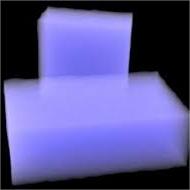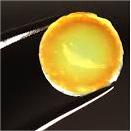Professional industry ceramic supplier, silicon nitride, silicon carbide, aluminum nitride and any other kinds of ceramics.
1. Introduction
Ever wondered what holds molten metal at 1,600°C without melting itself? Meet the silicon carbide crucible—a workhorse of high-temperature industrial processes. Made from one of the hardest and most thermally stable compounds known, these crucibles are essential in foundries, labs, and advanced ceramics manufacturing.

Silicon carbide crucibles aren’t just tough—they’re engineered for performance. Whether you’re melting aluminum, casting precious metals, or running lab-scale experiments, their thermal shock resistance and chemical inertness make them a top choice. But what exactly sets them apart? Let’s dive in.
2. What Is a Silicon Carbide Crucible?
A silicon carbide crucible is a container crafted from silicon carbide (SiC), a compound of silicon and carbon. Known for its extreme hardness (just below diamond), high thermal conductivity, and resistance to oxidation, SiC forms the backbone of many advanced ceramic components.
These crucibles are typically sintered or reaction-bonded (RBSiC) to achieve dense, robust structures capable of withstanding repeated heating and cooling cycles. Unlike traditional clay-graphite crucibles, silicon carbide versions offer superior longevity and purity—critical when contamination must be avoided.
3. Key Properties That Make Silicon Carbide Crucibles Stand Out
- Exceptional thermal shock resistance: They won’t crack when plunged into cold water after heating.
- High thermal conductivity: Heats evenly and quickly, improving energy efficiency.
- Chemical inertness: Resists corrosion from molten metals like aluminum, copper, and zinc.
- Mechanical strength: Maintains structural integrity even at red-hot temperatures.
These traits make silicon carbide crucibles ideal for foundries, jewelry casting, and metallurgical labs where reliability and purity matter.
4. Silicon Carbide vs. Other Crucible Materials
Not all crucibles are created equal. Alumina (Al2O3) and zirconia (ZrO2) crucibles are common alternatives, but each has trade-offs.

Alumina crucibles offer high purity and are great for lab use, but they’re more brittle and less thermally conductive. Zirconia crucibles handle even higher temperatures but are expensive and prone to phase changes that cause cracking.
Then there’s the boron carbide vs silicon carbide debate. Boron carbide (B4C) is harder and used in armor, but it’s less thermally conductive and more costly. For most melting applications, silicon carbide strikes the best balance of cost, performance, and durability.
5. Beyond Crucibles: The Wide World of Silicon Carbide Ceramics
Silicon carbide isn’t just for crucibles. Its versatility powers a whole ecosystem of advanced ceramic products:
- Silicon carbide ceramic tiles and bricks line furnaces and kilns.
- Silicon carbide burner nozzles and tubes endure corrosive combustion environments.
- RBSiC silicon carbide tile blocks and ceramic columns support high-temp structural applications.
- Silicon carbide rings and discs serve in pumps, valves, and sealing systems.
Even in everyday life, you’ll find silicon carbide in kitchenware—think silicon carbide ceramic baking dishes, casserole dishes with lids, dinner plates, salad bowls, and butter dishes. Brands like Staub have explored silicon carbide ceramic oven dishes for their even heating and durability.
6. Silicon Nitride: A Complementary Advanced Ceramic
While silicon carbide dominates in thermal conductivity, silicon nitride (Si3N4) excels in fracture toughness and creep resistance at high temperatures.
Products like silicon nitride crucibles, rings, plates, and custom heat shields are gaining traction in aerospace and semiconductor industries. A silicon nitride crucible factory might specialize in lab-grade containers for reactive melts where SiC could react.

High purity silicon nitride powder market growth reflects rising demand for precision components—from insulating rings to evaporation boats. Though more expensive, silicon nitride ceramics fill niches where impact resistance is non-negotiable.
7. Industrial and Niche Applications
From silicon carbide ceramic piping for corrosive fluid handling to thermocouple protection tubes in harsh environments, SiC’s reach is vast.
Specialized items like silicon carbide grinding discs, diamond grinding discs for pottery, and piezoelectric ceramic discs show up in manufacturing and electronics. Even plumbing benefits—silicon carbide ceramic disc taps and quarter-turn valves leverage wear resistance for long life.
In high-temp processing, silicon carbide tube furnaces and porous ceramic tubes enable controlled reactions, while silicon carbide mullite tubes offer hybrid performance for specific thermal profiles.
8. Choosing the Right Material for Your Needs
Ask yourself: Do you need thermal shock resistance (SiC)? Extreme toughness (Si3N4)? Ultra-high purity (Al2O3 or ZrO2)?
For metal melting, silicon carbide crucibles are usually the go-to. For structural parts under mechanical load at temperature, consider silicon nitride. And for cost-sensitive, non-reactive lab work, alumina might suffice.
Always verify purity levels, porosity, and manufacturing method—reaction-bonded (RBSiC) vs. sintered can affect performance dramatically.
9. Conclusion
The silicon carbide crucible is more than just a container—it’s a symbol of how advanced ceramics enable modern industry. From foundries to fine dining, silicon carbide and its cousin silicon nitride continue to push the boundaries of what’s possible at high temperatures.
Whether you’re sourcing a zirconia crucible for rare-earth processing or a silicon carbide ceramic pie dish for your kitchen, understanding these materials helps you choose wisely. In the world of advanced ceramics, performance isn’t optional—it’s baked in.
Our Website founded on October 17, 2012, is a high-tech enterprise committed to the research and development, production, processing, sales and technical services of ceramic relative materials such as What. Our products includes but not limited to Boron Carbide Ceramic Products, Boron Nitride Ceramic Products, Silicon Carbide Ceramic Products, Silicon Nitride Ceramic Products, Zirconium Dioxide Ceramic Products, etc. If you are interested, please feel free to contact us.



